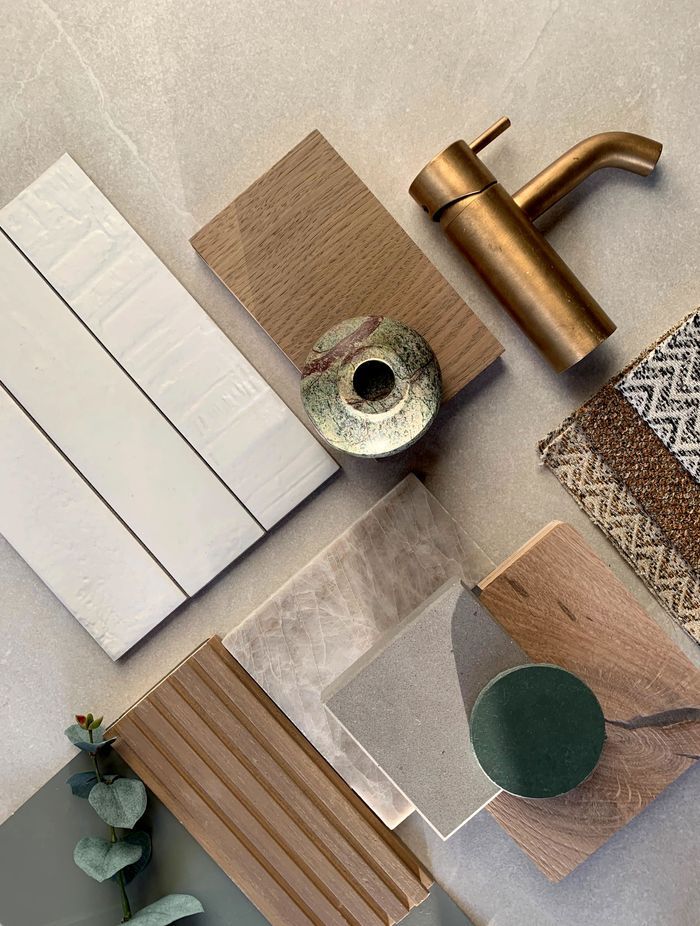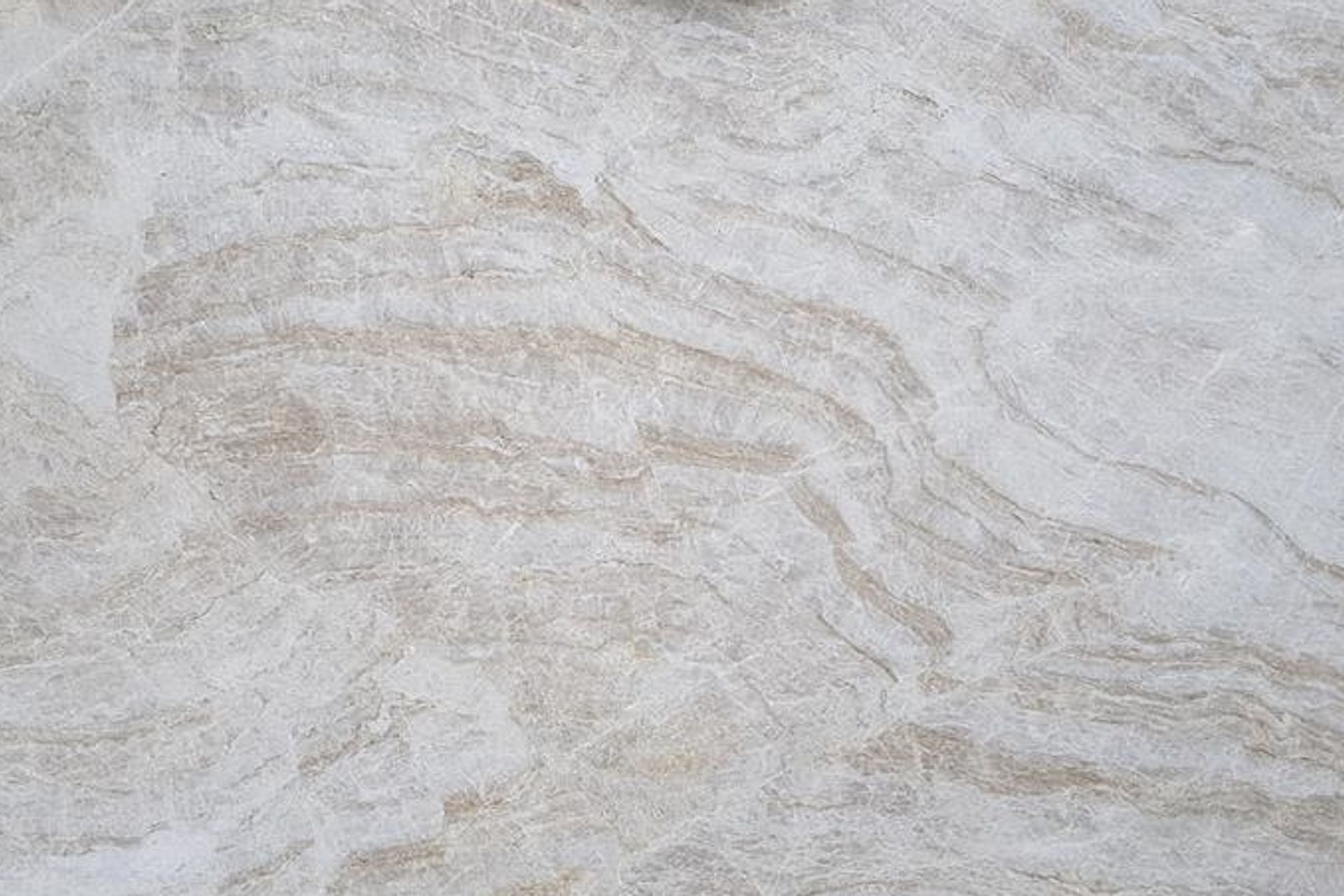'Biophilic elements' materials board styled by Trinity Interior Design
Written by
10 August 2021
•
3 min read

How do you put a materials board together for an interior project? What do you consider?
When we are preparing for a client and architect meeting our material boards can span anywhere in size, covering two to four large tables. On these tables, you will find the ‘key ingredients/backbone’ of the project, which we have selected as the stars of the show, which have been thoughtfully chosen to meet the clients brief.
This could be anything from a beautiful tile, stone or textile. From there each room has its own material board, laid out ready to present to the client. The colours, tones and materials you find in each room flow on from that first key ingredient so that there is a cohesiveness and theme throughout the home.
When forming a material board, it is always practical. It is listening to our clients and then responding/presenting them with the materials that are going to work best to suit their lifestyle and the home they wish to create. Often the material boards you will see online, on our Instagram, or the one you see here, we have simplified it down to the ‘key ingredients’ within the home to capture the look and feel for this project. Or it may be a special moment found within the larger scale material board for the home.

What was the starting point for this board?
The starting point for this material board was the tile that appears as the backdrop, Eureka Bianco by European Ceramics. The light captured here has highlighted the beautiful veining of this tile, it has a calm and poetic movement to it.
How do you layer up the different materials? What are your key considerations?
For this material board, the backbone is the Eureka Bianco tile. From there we have selected the Artedomus white subway tiles, to be used on the feature wall. These have a divine organic texture and reflect the natural movement found in the Eureka Bianco tile.
When layering and constructing our material boards, the next component selected always carries with it a piece from the previous material. It might reflect the movement of the previous tile, it might pick up a fleck of colour or the ribbing detail found in a textile. All layers intrinsically marry up and link together in some way.

Should you mix up different materials?/How many materials is too many?
Mixing materials brings life, interest and texture to an interior. There are no rules however, every home is different. Some homes may have only a handful of ingredients, creating a home of simple elegance. While another home might call to be richly layered for a sumptuous and decadent interior. We are always subtracting and adding when it comes to our material boards, until we reach that moment of harmony and balance.
How did you incorporate colour or pattern (if relevant)?
In this material board, we have selected the Plumbline Buddy tap in a Brushed Brass finish, this will continue to age and patina naturally. The James Dunlop Atmosphere Sand textile that has been selected for the living room, has a beautiful tactility and variance in colour that reflects the golden patina that will occur on the tap with time.
